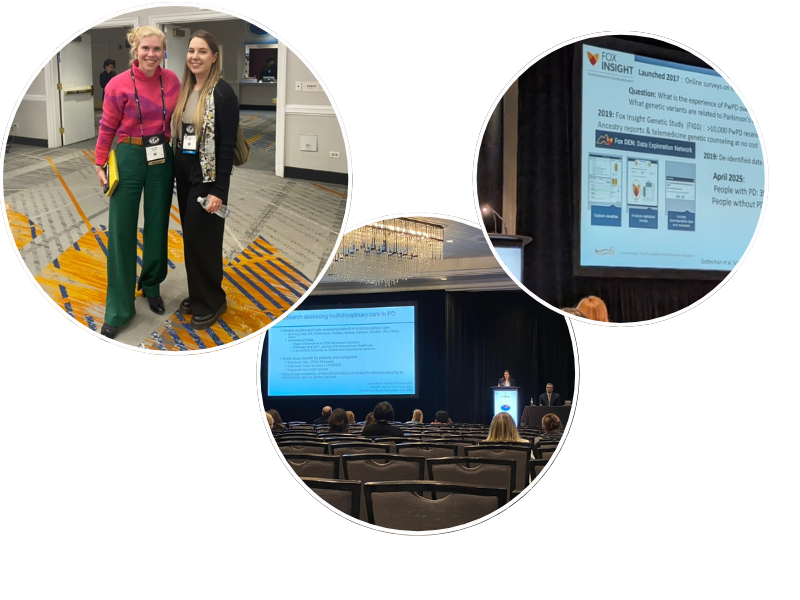Reflections from IAPRD 2025: Advancing the Frontiers of Parkinson’s Research and Care
- On June 5, 2025
In early May, I had the privilege of attending the 30th World Congress on Parkinson’s Disease and Related Disorders (IAPRD 2025), held from May 7 to 10 in New York City. The congress’s theme, “Empowering Scientists and Clinicians: Accelerating Discovery and Care Innovation,” was front and center throughout the event, highlighting the powerful connection between groundbreaking research and its clinical application.
This year’s program struck a thoughtful balance between scientific rigor and real-world impact. It’s clear to me that we are entering a new era in Parkinson’s research, where biomarkers, digital tools, precision medicine, and inclusive research practices are no longer theoretical ideas but concrete aspects of the work being done.
One of the most inspiring moments for me was the Melvin Yahr Lecture delivered by Dr. Caroline Tanner, titled “Breaking Barriers: Using Technology to Increase Access to Parkinson’s Research.” She spoke compellingly about how participant testing has evolved with the help of technology, and how digital tools are now expanding access to research and clinical trials, especially for people in rural, remote, or underserved areas.
The congress made it clear that the field is moving decisively toward personalized, genetically informed care. In the session on Genetics and Targeted Therapies, Dr. Roy Alcalay presented a strong case for integrating genetic testing into routine clinical practice, especially as trials for targeted therapies gather speed. The success of the PD Generation cohort was a powerful example of how combining genetic screening with thoughtful counseling can have real clinical impact.
Another session that deeply resonated with me was “It Takes a Village: Comprehensive Approach to Caring for Parkinson’s.” Dr. Anhar Hassan emphasized the importance of interdisciplinary teams including neurologists, therapists, social workers, and caregivers working together to support individuals living with PD. These team-based models are essential for improving quality of life and addressing the complex needs of patients and their families. I was also encouraged to see a strong focus on equity and inclusion in research. Many speakers emphasized the importance of involving more women, younger patients, and ethnically diverse communities in studies, particularly those focused on genetics and early diagnosis.
One of the most exciting innovations I saw was in the area of deep brain stimulation (DBS). Dr. Alexandra Boogers, from Leuven, Belgium, gave a particularly memorable presentation on personalizing DBS therapy. She is optimizing stimulation parameters to maximize benefits while minimizing side effects, using real-time neurophysiological feedback like local field potentials (LFPs) to guide electrode placement and settings. Her work paints a bold vision of how DBS can be tailored to each individual’s unique brain activity. It represents a true leap forward in precision neuromodulation.
On the last day, I had the opportunity to witness the Grand Video Challenge, where two teams of experts discussed and assessed rare cases of PD and related disorders —competing head-to-head with ChatGPT in making diagnoses. The results made it clear: while AI holds promise, it is still far from being a perfect diagnostic tool. Leading clinicians continue to demonstrate exceptional skill and judgment in establishing accurate diagnoses. The event was truly inspiring, offering valuable perspective on the daily challenges faced by care practitioners and the critical support they provide to patients.
What stood out to me most at IAPRD 2025 was the palpable sense of collective momentum. We are seeing faster translation of discoveries into clinical trials, better tools for individualized care, and growing awareness of the social and structural barriers that affect access to diagnosis, treatment, and participation in research.
As someone working to build the infrastructure behind open, accessible Parkinson’s research through our work at C-OPN, this congress felt both like a validation of our direction and a call to action. Whether it is through biobanking, large-scale data integration, or fostering partnerships with communities and industry stakeholders, I came away more certain than ever that scalable, collaborative platforms are essential to driving the next generation of breakthroughs.

